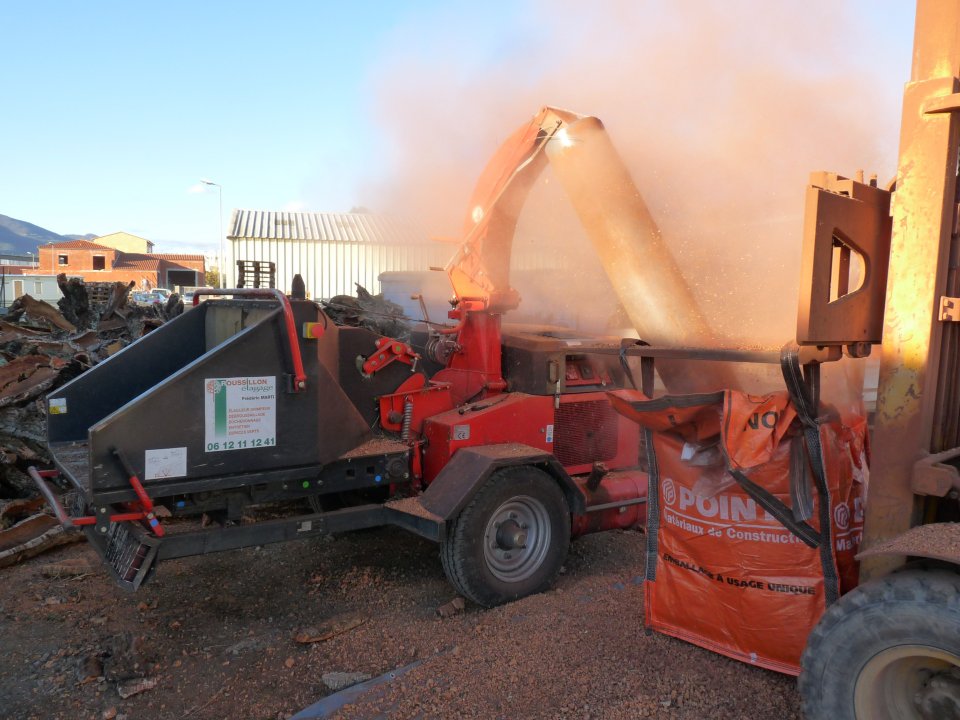
This project studied in the Pyrénées-Orientales region for cork waste and the setting up of a short supply chain (building, garden centre, etc.) in order to create local jobs and enable owners of cork oak forests to earn some. The structuring of a value chain for cork waste will allow a return to production of the cork groves favourable to the prevention of fire risks and thus to the conservation of its heritage interest. The project has chosen to use techniques which do not require major investment in equipment or buildings. We focused on the results of a transformation into granulated cork for bulk insulation.
In the Pyrénées-Orientales region as well as in France one of the main challenges is to find outlets for cork waste, which represents for certain massifs the overwhelming majority of production due to the regression of cork related activities during the 20th century and the recurrence of forest fires. It is thus necessary to work on short dies, implying the installation of units of first transformation of cork which are lacking in the majority of the producing regions. The possible added value on cork waste will make it possible to boost the increase in the production of quality cork by developing and maintaining a better structured sector.
The territory of the Pyrénées-Orientales region would allow an annual supply of scrap cork (virgin cork and burnt cork) estimated at between 100 and 200 tonnes.
15.7 % of cork oaks with a circumference of 70 cm or more have never been demascled (exploited at all).
The price per cubic meter of the production of granulated cork waste for bulk insulation was estimated at 206.96 euros exclusive of VAT (Purchase, exploitation, transport of cork, processing and packaging in big bags included).
Beyond the value for insulation, it is important to specify that the feedback on the use of cork in mulching is very positive. Cork produces an aesthetic, durable (lifespan of about 5 years), light mulching at a price consistent with that of other types of plant or mineral mulching.
A branch shredder is not dimensioned for the shredding of cork boards, because its feeding mouth is too narrow, forcing the widest boards to be re-cut. It is necessary to adapt the feeding mouth or to invest in a dedicated cork crusher. It is necessary to work in an isolated place with a suction system for the dust generated by the crushing to limit discomfort in order to promote the integration of the project.
It appears essential to have a screening device, either directly at the shredder exit, or through a screener to be able to diversify the products (mulch, bulk, mixture with concrete, wadding, etc.).
Big bag packaging is easily storable and transportable by a craftsman.
The installation of the pellets by blowing is simple and does not require prior training for a craftsman.
A branch shredder is not dimensioned for the shredding of cork, because its feeding mouth is too narrow, forcing the re-cutting of the boards.
Grinding generates a lot of dust, inconvenient for the operators and for the immediate vicinity.
The granules produced from a branch mill are not calibrated, which gives it a very strong dimensional heterogeneity.
Lack of standardization of the product does not allow it to access the public order.
In the planning of a structured supply chain of cork granules for insulation, it will be necessary to have technical advice or normative documents for these granules, generally required by the prime contractors, to envisage markets beyond the self-construction carried out by private individuals.
Through its innovative research, CRESTEB (Centre for Scientific Studies on the Thermal Aspects of the Building Envelope) has highlighted the thermal performance of the granulated cork/cellulose wadding mixture for the insulation of buildings, both for summer comfort - which is the strong point of cork in bulk - and for winter comfort.
Renaud PIAZZETTA, institutduliege@free.fr, http://www.institutduliege.fr/
Further information
DUMAS P.-G., 1986. Étude sur une relance de la filière liège française. Conseil général du génie rural, des eauxet des forêts (CGGREF), Paris.
GASSIN F., 1988. « Le liège : vers des produits nouveaux » in Forêt méditerranéenne, t. X. no 1, juillet 1988. Revue de l’association Forêt méditerranéenne, Marseille.
GILBERT C.-A., 2014. Estimation expérimentale des quantités de liège dans les différents types de peuplements des Pyrénées-Orientales. Rapport de stage de Licence professionnelle GADER (IUT de Perpignan ; département Génie biologique). Institut Méditerranéen du Liège, Vivès.
GOUMAND B., ROUSSE A., 1985. La filière liège dans les Pyrénées-Orientales – Étude de faisabilité technicoéconomique d’une unité de tubage et de trituration. SOCAFOR/Languedoc-Roussillon management, Les Cluses.
Renaud Piazzetta, IML
Storage of crushed cork. Renaud Piazzetta, IML
